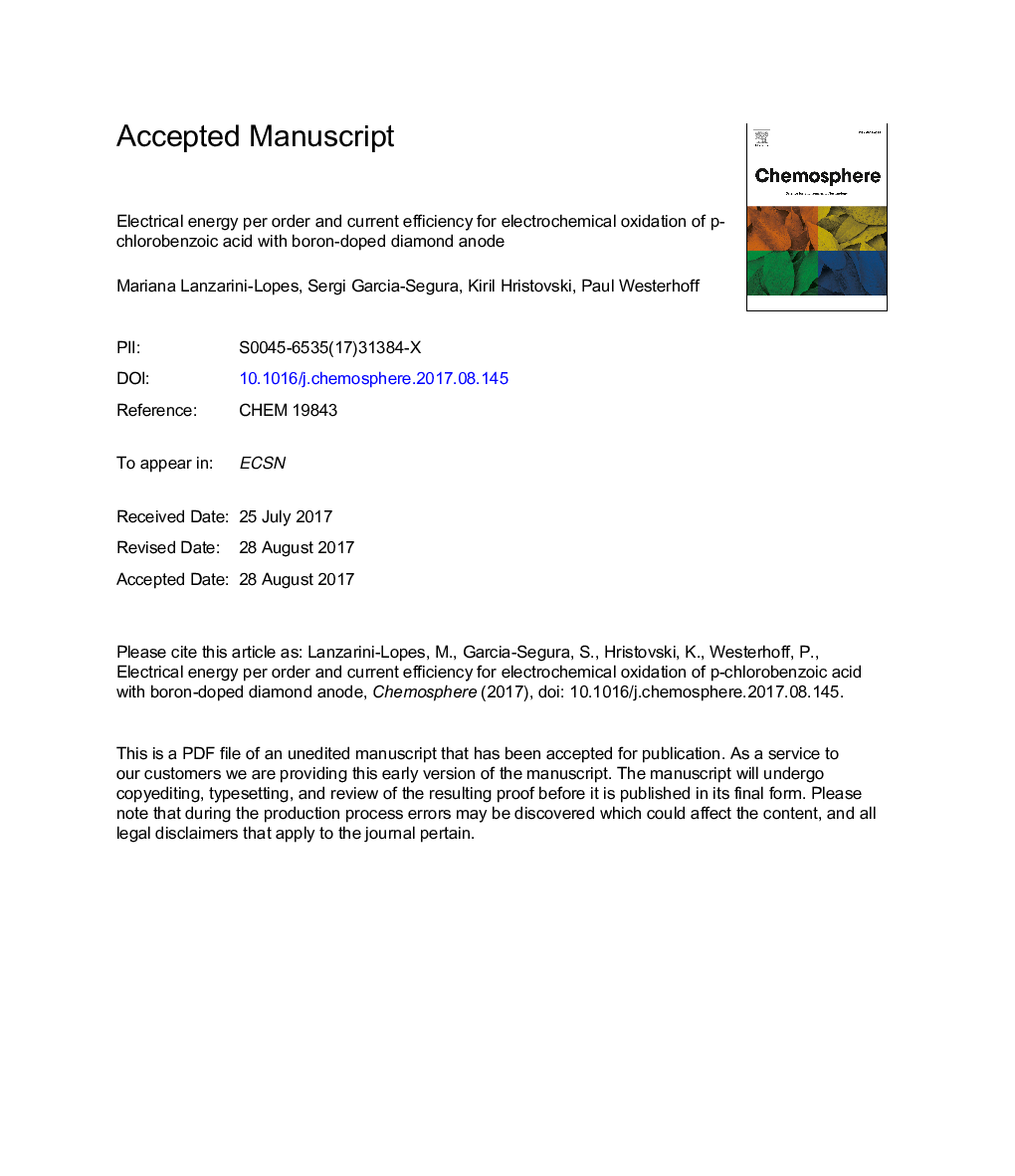| Article ID | Journal | Published Year | Pages | File Type |
|---|---|---|---|---|
| 5745839 | Chemosphere | 2017 | 31 Pages |
Abstract
Electrochemical oxidation (EO) is an advanced oxidation process for water treatment to mineralize organic contaminants. While proven to degrade a range of emerging pollutants in water, less attention has been given to quantify the effect of operational variables such applied current density and pollutant concentration on efficiency and energy requirements. Particular figures of merit were mineralization current efficiency (MCE) and electrical energy per order (EEO). Linear increases of applied current exponentially decreased the MCE due to the enhancement of undesired parasitic reactions that consumed generated hydroxyl radical. EEO values ranged from 39.3 to 331.8 kW h mâ3 orderâ1. Increasing the applied current also enhanced the EEO due to the transition from kinetics limited by current to kinetics limited by mass transfer. Further increases in current did not influence the removal rate, but it raised the EEO requirement. The EEO requirement diminished when decreasing initial pollutant loading with the increase of the apparent kinetic rate because of the relative availability of oxidant per pollutant molecule in solution at a defined current. Oxidation by-products released were identified, and a plausible degradative pathway has been suggested.
Keywords
Related Topics
Life Sciences
Environmental Science
Environmental Chemistry
Authors
Mariana Lanzarini-Lopes, Sergi Garcia-Segura, Kiril Hristovski, Paul Westerhoff,
